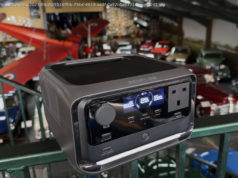Sleeker, slimmer and now a bit greyer
Hot on the heels of Slackware’s quarter century comes the 25th anniversary of the announcement that Debian was incoming.
Unlike Slackware, however, the Debian flavour of Linux remains hugely popular and the platform can usually be found troubling the top five rankings on open source OS tracker DistroWatch.com .
Announced by Ian Murdock on 16 August 1993 (the name « Debian » is a portmanteau of the name of Murdock’s girlfriend Debra, and his own forename, Ian) the original announcement cites Murdock’s dissatisfaction with the de-facto distro of the day, SLS, and his desire to create something « sleeker and slimmer ». It would, however, take until January 1994 before an open beta was unleashed on the public with v0.90.
Murdock was replaced as project leader by Bruce Perens (who was working at Pixar at the time) in 1996, and the operating system settled into a release cycle of a stable build roughly every two years, after a flurry of releases starting with version 1.1 in 1996.
The project also adopted the habit of assigning the name of characters from the movie Toy Story as codenames for each release (1.1 was given the name « Buzz » and the latest stable distribution, 9, is named « Stretch »).
Unstable versions are codenamed « Sid » after the destructive neighbouring kid in the first Toy Story film (arguably the best character, in the opinion of this hack at least).
Early versions of Debian required the user to compile the sources themselves in true, hardcore open source fashion before switching to the familiar binary distribution scheme as the project grew in popularity. The development team also grew rapidly, from a few dozen developers to more than 450 by the time version 2.2 rolled around in August 2000.
Development itself is governed by what Debian calls its « Social Contract », promising that users will always be the organisation’s priority, the software will remain free and the bug report database be visible. Slightly more detailed than « Don’t be evil », for sure.
As one of the very earliest distributions, Debian has also spawned dozens of other platforms, including the likes of Ubuntu and Raspbian, used on the diminutive Raspberry Pi family of computers. Despite this, development of Debian itself continues, with the latest release bumping the stable version to 9.5 on 14 July.
As for the founder of Debian, the story turns sour. Murdock married the « Deb » in Debian in 1993, but the couple divorced in 2008. In 2015 Murdock committed suicide. The Debian team dedicated 2017’s Debian 9, « Stretch », to its co-founder.
The Register took a look at Debian 9, with its default GNOME desktop, last year and found much to like. Version 10 will likely make an appearance in 2019, based on past performance, although « Stretch » will see support heading to June 2022.
With so many distributions lurking downstream from Debian, the granddaddy of distros can expect many more anniversaries. And this, in our opinion, can only be a good thing. ®
Sponsored: Following Bottomline’s journey to the Hybrid Cloud






